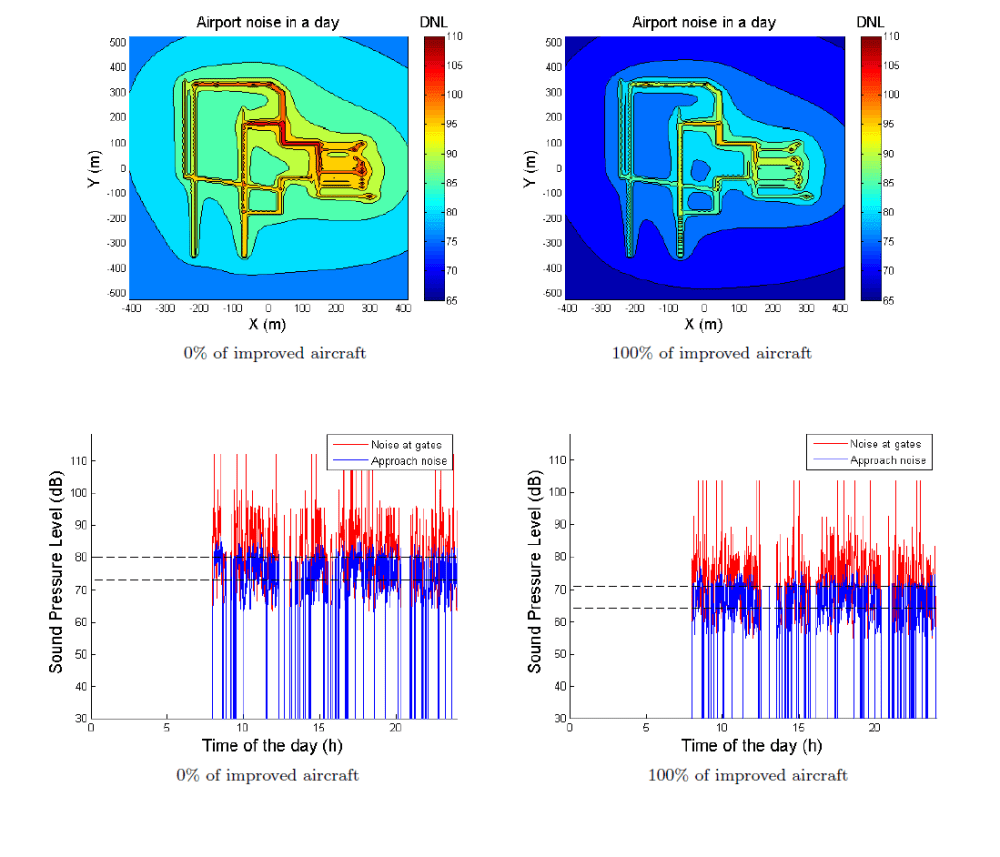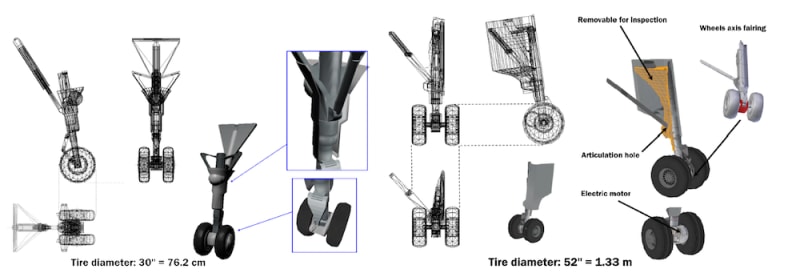This project proposes an improved Green Taxiing system focused around the landing gear. Because single-aisle aircraft should represent 70% of the deliveries over the next 20 years, a typical 200-passenger aircraft, similar to the Airbus A320 or the Boeing 737, flying a two-hour mission is chosen as the baseline for the sizing process.
This electric and autonomous taxiing system is designed with 200kg induction motors with a power of 90kW and a variator ratio of 20. These motors power the wheels hence enabling the aircraft to taxi without its main engines. They also avoid the use of tugs normally required for the pushback phase. The motor identified as optimum is close to the one developed and prototyped by Safran Honeywell. The system also includes 300kg super-capacitors that store the energy normally dissipated into heat during braking to power the electric motors when needed. These super-capacitors can also be recharged when the aircraft is at the gate. Electric motors are also used to pre-rotate the wheels before touchdown to reduce the stress on tires and landing gears at landing. Titanium Matrix Composite (TMC) developed by SP Aerospace is used as a new lightweight material to compensate the weight added by the electric motors and the super-capacitors. A finite element analysis showed that the wheel shaft diameter must be increased by 9cm to meet the maximum deformation constraint. Landing gear fairings, also used as landing gear doors, are installed to reduce approach noise. Indeed, wheel sides are covered with perforated wheel caps in order to reduce circulation in wheel rims and screws while limiting overheating. Those caps also remove the need for main landing gear doors (similar to the Boeing 737 MAX). Under-leg fairings are added under the legs in order to account for approach glide path and avoid circulation from underneath the leg at high angles of attack.
With a cost of $200,000/aircraft, the electric and autonomous taxiing system enables engine use and maintenance time to be reduced by 17%, resulting in large savings in fuel consumption. The use of TMC reduces the weight of each landing gear by 20%, while increasing the aircraft acquisition and development costs by 1.5% and 1%, respectively. Using electric motors for taxiing decreases the overall ground noise by around 10dB. In addition, an average 6dB noise reduction is estimated during the landing phase. Using NASA’s experimental data, pre-rotating the wheels leads to a 94% wear reduction. It results in a decrease in tire and maintenance costs of around $75 per landing.
To conclude, the presented solution is able to reduce fuel consumption using an innovative hybrid electric architecture for the taxi phase while reducing the energy wasted during the braking phase. Moreover, if the solution is implemented on a large scale, it will greatly improve airport neighborhoods’ quality of life by reducing noise, CO2, and NOx emissions. In addition to providing a more affordable solution to airlines, removing tugs and enhancing aircraft maneuverability should also lead to improved ground operations, especially at congested airports.
Video
Like this entry?
-
About the Entrant
- Name:Christopher Frank
- Type of entry:teamTeam members:Christopher Frank - Georgia Institute of Technology
Jean-Guillaume Durand - Georgia Institute of Technology
William Levy - Georgia Institute of Technology
Frederic Allair - Georgia Institute of Technology - Software used for this entry:Patran-Nastran, Matlab, Blender, Java, and Netlogo
- Patent status:none








